I have just read two books about France and the French: Lucy Wadham’s The Secret Life of France (Faber) and Graham Robb’s The Discovery of France (Picador). Although ostensibly they tackle the same subject, they are very different. What they both have in common, though, is being dressed up as something that they are not.
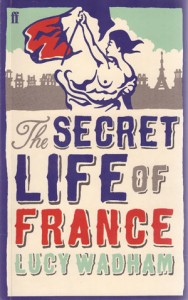 According to the blurb Lucy Wadham “examines the profound and varied differences between the Anglo-Saxon and French worldviews, using her own experience as a wife and a mother, and later an investigative journalist for the BBC”. I had hardly started the book before I wanted to throw it in the bin in disgust. When she talked about the necessity of being smartly dressed, I thought of the women here who go to the local shop in dressing gowns and slippers. When she said that “there is no tradition of gender segregation in France because men enjoy the company of women”, I looked out of my window at benches on the square, the men on one side, the women on the other. I have lived in France for twelve years. Lucy Wadham’s Parisian bourgeois lifestyle bears no relation to my life in a village which votes (and thinks) Communist, to the extent that it is known locally as Petit Moscou. I know that my village isn’t typical of France; nor is Paris.
According to the blurb Lucy Wadham “examines the profound and varied differences between the Anglo-Saxon and French worldviews, using her own experience as a wife and a mother, and later an investigative journalist for the BBC”. I had hardly started the book before I wanted to throw it in the bin in disgust. When she talked about the necessity of being smartly dressed, I thought of the women here who go to the local shop in dressing gowns and slippers. When she said that “there is no tradition of gender segregation in France because men enjoy the company of women”, I looked out of my window at benches on the square, the men on one side, the women on the other. I have lived in France for twelve years. Lucy Wadham’s Parisian bourgeois lifestyle bears no relation to my life in a village which votes (and thinks) Communist, to the extent that it is known locally as Petit Moscou. I know that my village isn’t typical of France; nor is Paris.
In the end, I didn’t give up on the book, I just renamed it in my mind: The Secret Life of Lucy Wadham. She launches it with a champagne-infused Rabelaisian tale of life in the capital, peppering the account with anecdotes about the sex lives of her circle and recent French presidents. Then she starts to look at more general issues: education, racism, politics.
Slowly the book grew on me, the snorts of outrage being replaced by smiles of recognition. Yes, solidarité is an important concept, and mass demonstrations are sometimes surprisingly effective. I learned that one of the Revolution’s slogans was “Liberté, égalité, fraternité, ou la mort – or death” – the last bit has been hushed up. And I am still thinking about Truth versus Beauty. When she stops extrapolating from her personal life – fun reading but personal – and interpolates from her experiences as a journalist, she really has something to say.
So in the end I was pleased that I had rescued the book from the bin. And when she publishes a book about her new life in the Cevennes hills in the south of France, I will be one of the first to buy it.
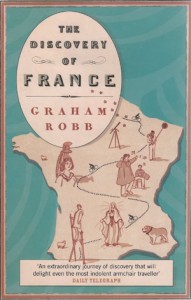 The other book, The Discovery of France, by Graham Robb, boasts a quote from a review in the Daily Telegraph on its front cover: “An extraordinary journey of discovery that will delight even the most indolent armchair traveller”. The cover has a cyclist zig-zagging down from Calais to Toulouse. A travel book, then, impression confirmed by the preface, entitled: Itinerary.
The other book, The Discovery of France, by Graham Robb, boasts a quote from a review in the Daily Telegraph on its front cover: “An extraordinary journey of discovery that will delight even the most indolent armchair traveller”. The cover has a cyclist zig-zagging down from Calais to Toulouse. A travel book, then, impression confirmed by the preface, entitled: Itinerary.
However, the book is not a travel book, and all the better for it. It is full of anecdotes, but they are not about the author’s peregrinations. He journeys through multiple timelines rather than along a single highway. What emerges is the immense variety of the country, the palimpsest that is France.
Amongst other things, I learned that
-
Many regional dishes were invented in Paris and only later re-exported to the origins of the main ingredients – in the 19th century, farmers sent their best produce to the capital making do with vegetables for themselves.
-
Pedlars might carry 23,000 items in their packs.
-
The immense, dramatic Gorges du Verdon were only discovered in 1905.
I was particularly taken by Robb’s description of the slow progress of geographical knowledge about France. The Parisian Société de Géographie mounted an expedition in 1838 but only went as far as no. 8 Chaussée de la Maine, on the southern edge of the city, to see a model: “Two flat-bottomed boats holding six passengers each plied the three-foot-deep Mediterranean and sometimes realistically ran aground on the rocks of the Breton coast. There were pieces of apple trees in Normandy and pine trees in the Landes. Geology was represented by thumb-sized cavities into which M Sanis had pushed a piece of coal, a cube of peat.”
It is a superbly written, impressively solid book, larded with notes, an extensive bibliography and two indexes; all the makings of an academic text book. But it reads like a novel. It should become a classic. A travel book? A book for first year university students of French? A book for historians? All these and more.


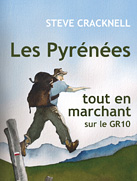
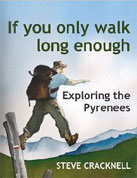

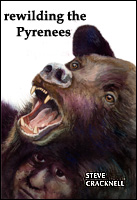



Footprints on the mountains